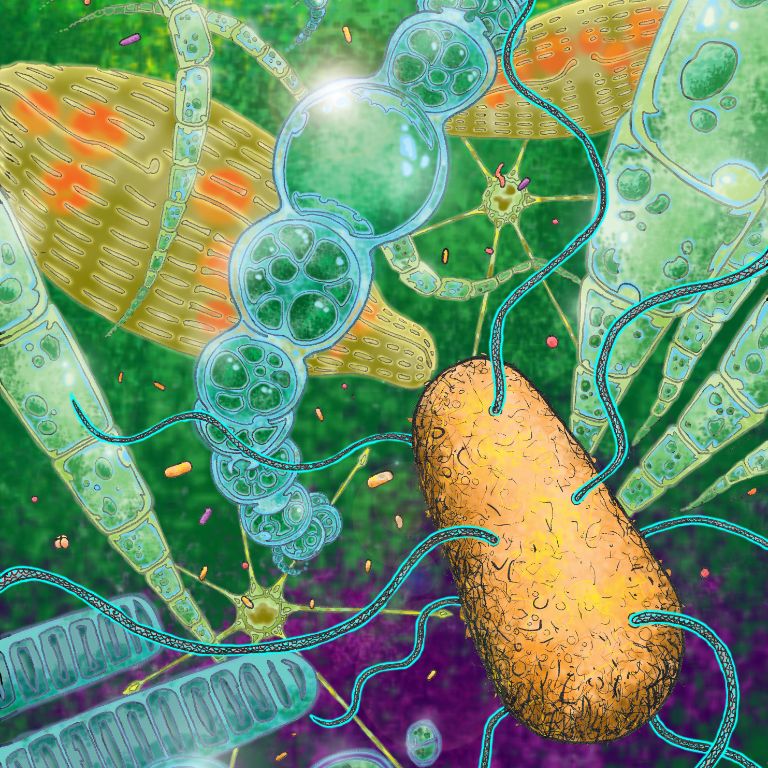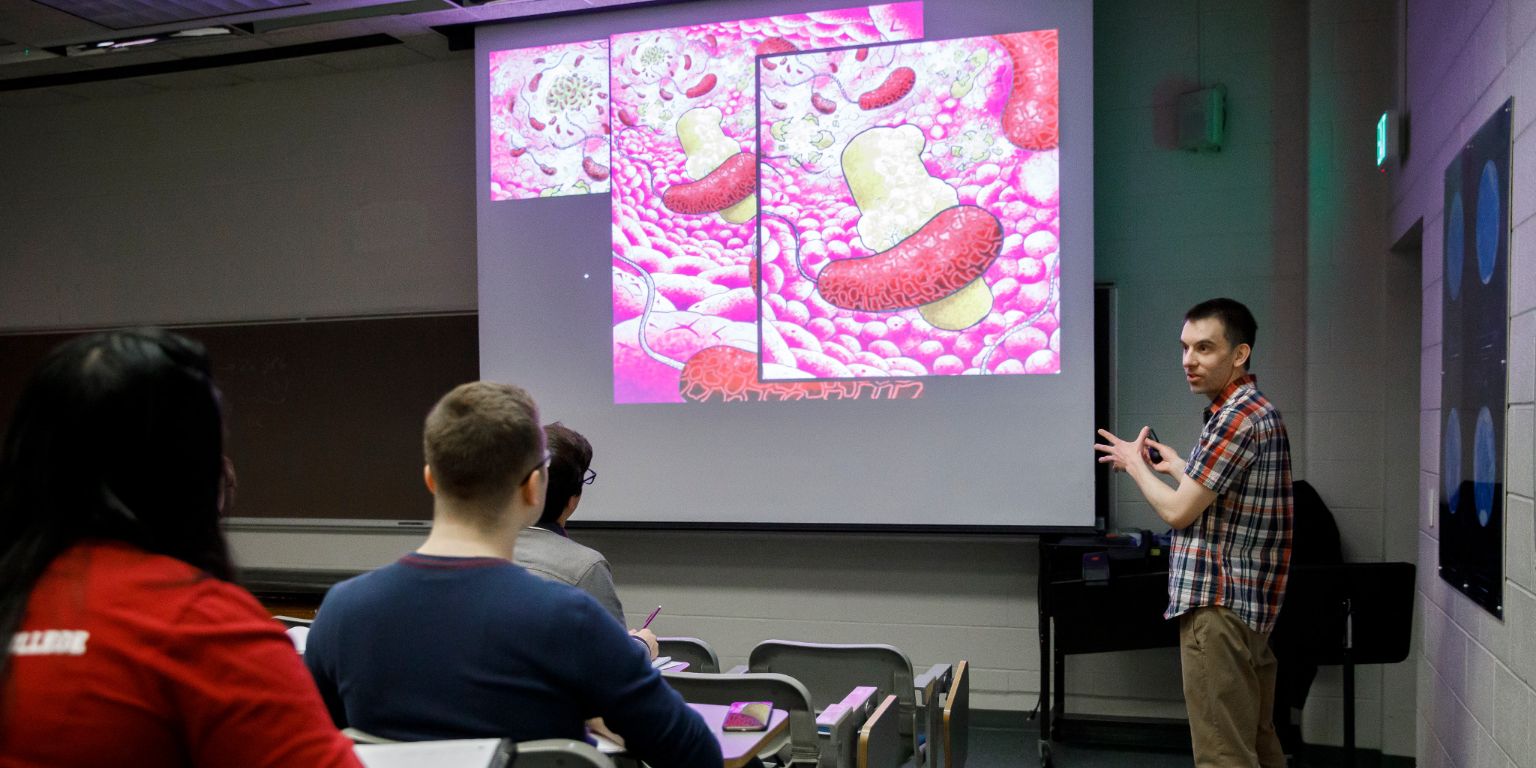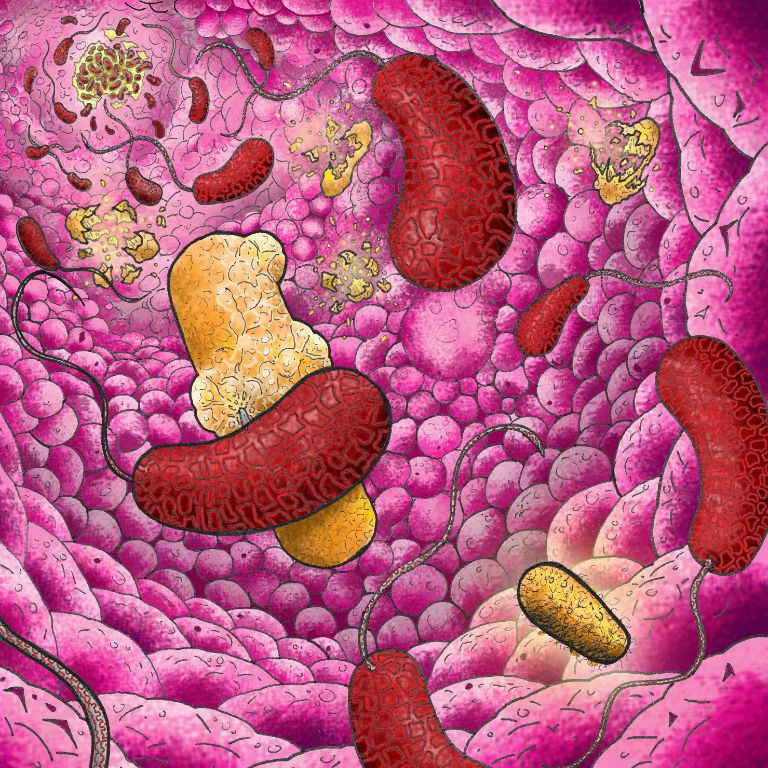"Humans are really wired to learn by storytelling," McKinlay said. "Other people have done research on this, so I thought it would be an effective concept to employ in my class."
McKinlay started slowly changing the curriculum to focus less on memorization and more on understanding information and thinking about it in a different way.
This includes using his own artwork as a visual tool for students. A skilled artist, McKinlay begins most lectures explaining the content through an illustrated storyline. He also is experimenting with five-minute writing activities as a creative exercise.
"Sometimes I will ask them questions," McKinlay said. "For example, I might say, 'Pretend you're a tiny ghost and you travel right through a cell; describe the things you would see along the way.'"
It may be a nontraditional way of teaching and learning, but it still covers the required material.
"It's easy to confuse memorization for understanding," McKinlay said. "I have found that if I ask a question a certain way, it reveals that the true understanding isn't there. I wanted to help students get past memorization and achieve understanding.
"My main goal is to help students gain functional knowledge and get away from the details," McKinlay said. "Learn what the details mean when you put them together."
McKinlay's new storytelling approach has helped students understand the material better and feel more engaged with the topic.
"Professor McKinlay teaches in ways I have rarely seen in any classroom," said Megan Perkins, one of McKinlay's students. "I feel that I remember more because I'm engaged visually and mentally with the topic."
For example, Perkins said McKinlay has used this storyline approach to explain the metabolic features of the bacteria E. coli.
"I can truly say these drawings are nothing short of stunning and, as someone who is fairly artistic, I feel very engaged with the art and consequently the storyline," Perkins said. "He doesn't just use images from the internet to tell his story."
McKinlay's interest in art was sparked at a young age. He said he was always drawing as a child and a teenager, but his main interest was creating comics.
He continued to pursue his love of art into college, where he attended University of British Columbia. It was there that he combined his two passions of science and art, working as a comic artist for his university's science newspaper. After earning his undergraduate degree in environmental microbiology, McKinlay focused on his research and earned his Ph.D. in microbiology and molecular genetics from Michigan State University in 2006.
McKinlay's incorporation of his art into his classes is supported in part through a $1.15 million NSF CAREER grant received last year. This use of storytelling is also part of a collaborative research effort with Katherine Kearns, assistant vice provost for student development at the University Graduate School. In her previous role in the Center for Innovative Teaching and Learning, Kearns worked with faculty and graduate students on classroom innovation projects. She helped instructors identify concept misconceptions, design and implement teaching innovations, and assess student learning outcomes.
Eventually, McKinlay wants take this approach to high schools and younger students, making microbiology more approachable for students to learn and sparking their interest early on.



 The College of Arts
The College of Arts